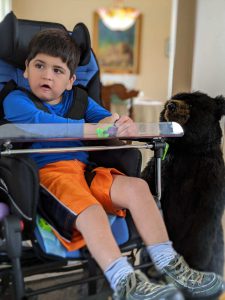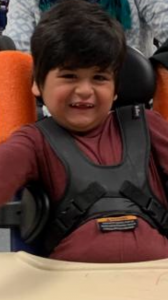 Now that Joey and I have been back in person for over a month I wanted to take a look at his data and see how he is doing. While I feel like we still haven’t gotten back into the swing of the eye gaze, I am very aware that what I “feel” might not always be accurate. Sometimes I need to step back and look at what the data tells me.
Now that Joey and I have been back in person for over a month I wanted to take a look at his data and see how he is doing. While I feel like we still haven’t gotten back into the swing of the eye gaze, I am very aware that what I “feel” might not always be accurate. Sometimes I need to step back and look at what the data tells me.
For Joey’s use of the eye gaze device within ten minute time samplings, he is showing a slight decline since the winter. In January, February, and those few weeks we were able to meet in March Joey was using the device fluidly, with an average of 25 hits per ten minutes. However, in February he was down to around 16 hits per ten minutes, so his average of 21 hits in July is not that far off. (January was as high as 28).

 I have spent the last few hours analyzing Joey’s data over the last year and looking at trends and patterns. I have the opportunity to present Joey’s journey and the data of his progress at both the
I have spent the last few hours analyzing Joey’s data over the last year and looking at trends and patterns. I have the opportunity to present Joey’s journey and the data of his progress at both the 
